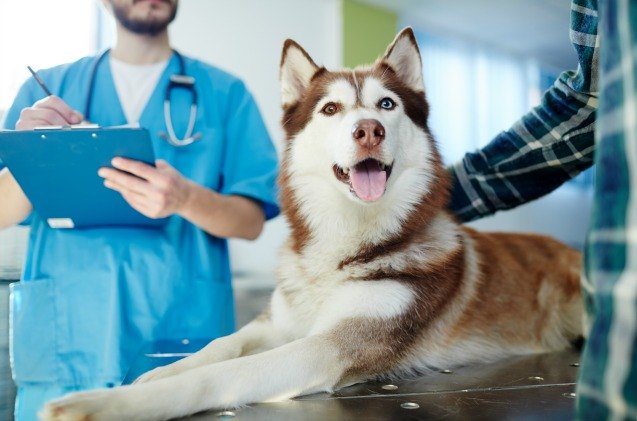It’s a moment of concern that no cat parent wants – when you scoop the litter box, and something just looks… off. Perhaps your usually energetic cat seems a little less playful, or their stool isn’t its normal consistency. We strive to give our cats the best possible quality of life, and any change of behavior that deviates from their usual happy, healthy selves sends us searching for answers. After all, we want to fix it! Right? While we often think of obvious threats and concerns, like fleas and ticks, some of the most common challenges to our cats' well-being are microscopic pests and parasites. One such threat that is often overlooked or undiscussed is Giardia, an intestinal parasite that can significantly impact your cat’s digestive health and overall comfort. Understanding Giardia – how it spreads, the signs to watch for, and most importantly, how to prevent and address it – is vital for every cat owner. In this post, we’ll talk about the basics of Giardia and the practical steps you can take to prioritize your cat’s health. What Exactly is Giardia? Giardia is a protozoan – a single-celled, microscopic parasite, different from the bacteria and viruses we usually associate with health problems. Think of protozoa as tiny, primitive organisms that can move around and often live within a host animal. Another protozoan parasite that impacts the intestine, you may have heard of, is Coccidia. This is important to note, as while they all fall under the broad umbrella of parasites, their life cycles and the challenges they pose for the host animal can differ. For Giardia to survive and spread, it relies on a two-stage life cycle. The first stage is the cyst. These are the hardy, protective capsules that the Giardia organism forms outside the host’s body. It allows the organism to survive for weeks or months in cool, moist environments like contaminated water sources, soil, and food. The cycle continues when a cat ingests these cysts, perhaps from grooming them off their fur after walking through contaminated soil or drinking from a contaminated puddle. Inside the cat’s small intestine, the cysts grow into active, feeding organisms known as trophozoites. These trophozoites attach to the intestinal lining, interfering with nutrient absorption and causing the symptoms associated with Giardiasis. As they multiply, some trophozoites will transform back into cysts, being shed in the cat’s feces to complete the cycle and allow the parasite to infect other animals (or re-infect the same cat). What Cats Are Most Susceptible to Giardia? Any cat can pick up Giardia, but several factors could increase a cat’s risk. Cats with outdoor access are at a significantly higher risk due to their access to potentially contaminated soil, puddles, and the feces of other infected animals. Additionally, multi-cat households have a higher risk as they share litter boxes, food bowls, and even groom one another, making transmission between the cats more likely. Kittens and very young cats are particularly vulnerable to the effects of Giardia, as their immune systems are still developing and may not be strong enough to fight off the infection as effectively. Similarly, cats with compromised immune systems due to stress, illness, or other underlying health conditions are also more susceptible to developing an infection if exposed to Giardia. Common Signs of Giardia in Cats Detecting Giardia in your cat can be challenging. The symptoms cover a broad spectrum, ranging from virtually unnoticeable to severely debilitating. Some cats can even be asymptomatic carriers, meaning they carry the parasite and shed cysts into the environment without showing any outward signs of the illness. Symptoms can also be intermittent, appearing for a few days, disappearing, and then recurring weeks later, making it difficult for even the most observant cat parent to identify if they have recovered. Here are the most common signs to watch out for: Gastrointestinal Troubles When Giardia does manifest noticeable symptoms, it primarily affects the gastrointestinal system. The most common and tell-tale sign is diarrhea. This isn’t just any loose stool; it’s often characterized as soft, watery, or even greasy in appearance. It also frequently has a foul odor. You may notice mucus in the stool, or in more severe cases, traces of blood. This is why it’s important to be observant when cleaning your cat’s litter box to pick up on any signs of trouble their waste may reveal. While less common than diarrhea, vomiting can occur, especially if the infection is severe or persistent. In young kittens or chronic cases, the loss of nutrient absorption caused by Giardia can lead to weight loss and a general failure to thrive, hindering their growth and development. A cat struggling to absorb nutrients from their diet may also display poor coat health, with their coat appearing dull, dry, or unkempt despite keeping up with their regular grooming. Subtle signs of abdominal pain or discomfort may be present. This includes a hunched posture, sensitivity when touched around the belly, or a reluctance to enjoy their usual playful daytime activities. Behavioral Changes Beyond the gastrointestinal struggles, Giardia can also lead to more general signs of illness, with your cat’s behavior revealing that they aren’t feeling quite like themselves. A noticeable decrease in their activity level (lethargy) is common, as they no longer have the usual energy to keep up with their day. You may also notice a loss of appetite or a reduced interest in food or treats, contributing to further weight loss. In cases of severe diarrhea and vomiting, dehydration can become a serious concern, especially because cats are, naturally, more prone to hydration-related problems. Visible signs of dehydration include sunken eyes or skin that, when gently pinched, is slow to return to its normal position. When to Be Concerned Any persistent change in your cat’s bathroom habits, particularly chronic or recurring diarrhea, should be considered a red flag. While soft stool doesn’t necessarily mean Giardia, these consistent changes are often a sign of a more significant medical issue. Early diagnosis and intervention are key to minimizing your cat’s discomfort, furthering the spread of the parasite, and helping your cat feel like their happy, healthy self again.

























